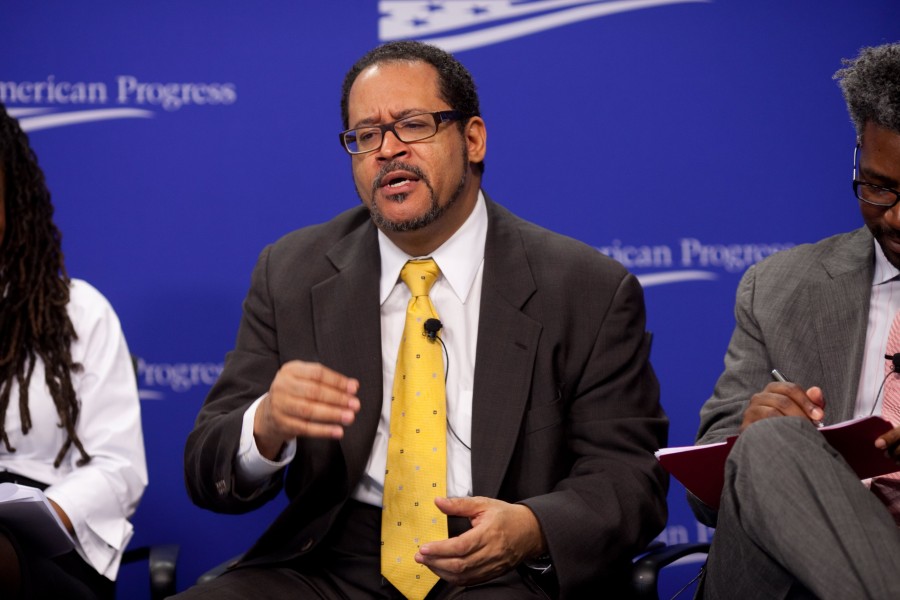Mass incarceration dialogue continues in 2016
January 14, 2016
It’s no secret: The United States locks up more of its citizens than any other nation on earth. And in most cases, people of color bear the brunt of America’s love affair with prisons.
The Bureau of Justice Statistics estimates that black and Hispanic male inmates comprise roughly 59 percent of the U.S. state and federal prison population, despite occupying about 29 percent of the general population.
The Bureau of Justice statistics report shows 3 percent of black males of all ages were imprisoned by the end of 2013, compared to just 1 percent of white males.
America has a problem, and the faculty, staff and students at Central have taken notice.
“For some students, finding this big divide of inequality is startling. It goes against every ounce of what it means to be American,” said Xavier Cavazos, English professor and member of the steering committee for mass incarceration events at Central.
Cavazos and his fellow faculty and staff at Central have been organizing dozens of events that educate students on the reality of mass incarceration.
About six events are planned for winter quarter, ranging from visiting artists, to documentary screenings, to keynote addresses featuring some of the biggest names campaigning for racial equality.
“The content is difficult,” Cavazos said. “It forces us, as young Americans, to look at the mirror of America.”
The idea originated from Stacey Robertson, dean of College of Arts and Humanities. Hearing that Central used to feature an annual speakers series, Robertson decided to revitalize that concept, but with her own twist.
“In terms of a series like this, we’re unique,” said Robertson. “We haven’t seen another university doing what we’re doing here on mass incarceration. Other institutions haven’t come close.”
In fall quarter, the National Prison Project’s David Fathi was the “big get,” while this quarter prominent black scholar Michael Eric Dyson and The Atlantic magazine writer Ta-Nehisi Coates, who recently won the National Book Award for “Between the World and Me,”are two of the biggest names around. He is in the process of rescheduling after having to cancel his first presentation date.
Dyson is the author of multiple books dissecting the role of race in America, including “Come Hell or High Water: Hurricane Katrina and the Color of Disaster,” which won the National Book Award in 2007.
“He’s a world-renowned leading author on mass incarceration,” said Michelle Cyrus, a diversity officer at the Center for Diversity and Social Justice and a member of the steering committee. “We wanted to bring him here to educate the populace on that.”
Other events include a documentary screening of “The House I live In;” artist Fabrice Monteiro’s presentation of “Prophesizing the Global,” which shows people of color and the treatment they endured in the slave trade; scholar Leslie Shore’s presentation “Reuniting Families Torn Apart by Incarceration: Mother’s Day in California Prisons,” about mothers in prison; and a panel discussing community policing titled “Community Policing in a Diverse and Global Society.”
Mark Auslander is the director of the Museum of Culture and Environment and, with English professor Kathy Whitcomb, oversees the mass incarceration website.
It was his idea to bring Fabrice Monteiro to Central, who Auslander describes as “really one of the great artists of our time.”
“He’s one of the most imaginative people out there,” Auslander said. Monteiro “really pushes the art forward.”
Monteiro has volunteers dress in apparel of oppression—including devices meant to torture—that were common during the slave era. He then snaps pictures of the subjects. The results are startling.
“These conversations are sometimes painful, but they’re necessary,” Auslander said. “Our students are willing and mature enough to tackle these issues.”
As a professor of anthropology, Auslander has studied Monteiro’s work for many years. He plans to publish a paper in the coming months.
But even as one of his favorite artists is on his way to Central, Auslander said the year-long dialogue isn’t about the size of the event, or the name of the guest.
“A lot of it is not the big events,” he said. “It’s the small conversations in classrooms, or at the Tav, or in dorm rooms; wherever students are.”


